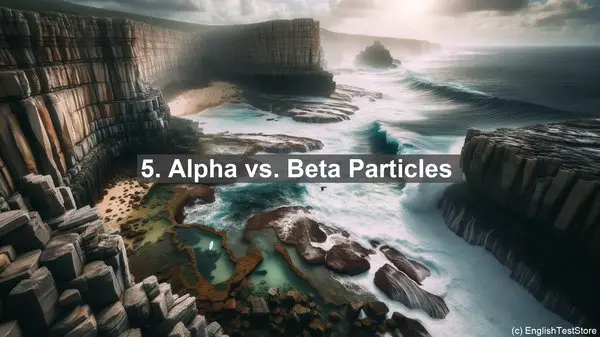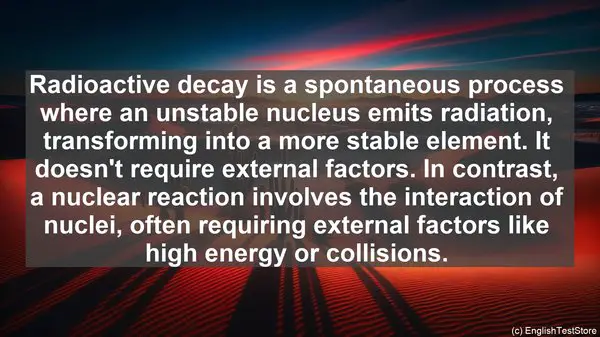Introduction
Welcome to today’s lesson on nuclear chemistry. In this lesson, we’ll be discussing the top 10 commonly confused words in this field. Understanding these terms is crucial for a solid foundation in nuclear chemistry. So, let’s dive in!
1. Isotope vs. Ion
Often, students get confused between isotopes and ions. Isotopes are atoms of the same element with different numbers of neutrons, while ions are atoms with a different number of electrons, resulting in a charge. So, isotopes differ in their atomic mass, while ions differ in their charge.

2. Fission vs. Fusion
Fission and fusion are both nuclear reactions, but they’re opposite processes. Fission involves splitting a heavy nucleus into smaller ones, releasing energy. On the other hand, fusion combines light nuclei to form a heavier one, also releasing energy. Fission is the process behind nuclear power plants, while fusion powers the sun.
3. Radioactive Decay vs. Nuclear Reaction
Radioactive decay is a spontaneous process where an unstable nucleus emits radiation, transforming into a more stable element. It doesn’t require external factors. In contrast, a nuclear reaction involves the interaction of nuclei, often requiring external factors like high energy or collisions.
4. Half-life vs. Lifetime
Half-life is the time taken for half of a radioactive substance to decay. It’s a fixed property for each isotope. Lifetime, on the other hand, refers to the duration of a substance’s usefulness or stability. They’re different concepts, so don’t confuse them.
5. Alpha vs. Beta Particles
Alpha and beta particles are both emitted during radioactive decay. Alpha particles consist of two protons and two neutrons, while beta particles can be either electrons or positrons. They have different properties and interactions, so it’s important to differentiate between them.
6. Nuclear Binding Energy vs. Atomic Binding Energy
Nuclear binding energy refers to the energy required to hold a nucleus together. It’s related to the mass defect, where the mass of the nucleus is less than the sum of its individual particles. Atomic binding energy, on the other hand, refers to the energy required to hold electrons in an atom’s orbit.
7. Transmutation vs. Transformation
Transmutation refers to the change of one element into another, often through nuclear reactions. It involves altering the number of protons in the nucleus. Transformation, on the other hand, is a broader term that can refer to any change, not necessarily involving nuclear processes.
8. Chain Reaction vs. Controlled Reaction
A chain reaction is a self-sustaining reaction where the products of one reaction trigger further reactions. In the context of nuclear reactions, it can lead to an uncontrolled release of energy, as in a nuclear bomb. A controlled reaction, as the name suggests, is carefully regulated, as in nuclear power plants.
9. Neutron Activation vs. Neutron Moderation
Neutron activation refers to the process where a stable nucleus absorbs a neutron, becoming unstable and potentially undergoing radioactive decay. Neutron moderation, on the other hand, involves slowing down fast neutrons, often using a moderator like water or graphite.
10. Radioactive Contamination vs. Radiation Exposure
Radioactive contamination refers to the presence of radioactive substances on surfaces or in the environment. It can be external or internal, through ingestion or inhalation. Radiation exposure, on the other hand, refers to the absorption of radiation by the body, which can have health effects.

